Our Gigabyte W291-Z00 review will show why this GPU tower server is unique in the market. Utilizing a single AMD EPYC CPU, the server offers capabilities in a form factor that were previously unobtainable in the market. Headlining the feature list is support for up to four passively cooled GPUs. The Gigabyte W291-Z00 has a cooling system designed to support cooling high-end GPUs in a tower form factor. In this review, we are going to cover what the system offers, along with some of the trade-offs that Gigabyte’s design team needed to make in order to match the tower form factor.
Gigabyte W291-Z00 Hardware Overview
The Gigabyte W291-Z00 is a pedestal tower server that has a primary focus: house up to four GPUs. Looking at the exterior of the server, we see a front panel dominated by air inlets. That will be a design theme of the server that we will see throughout.
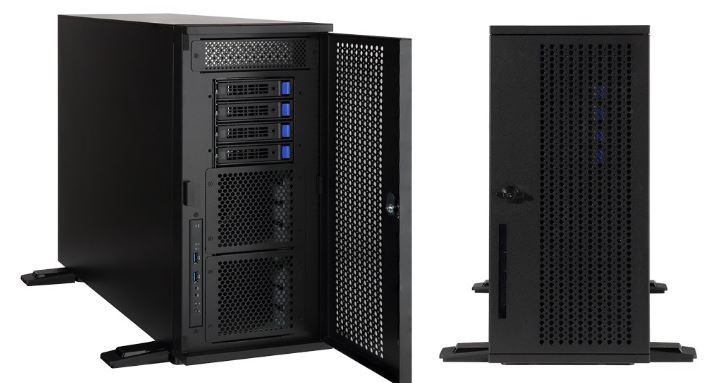
Four front 3.5″ bays provide hot-swap storage for hard drives or SATA SSDs. One can re-wire these to accept SAS drives, however, if one is using four double-width GPUs the most likely configuration is with SATA.
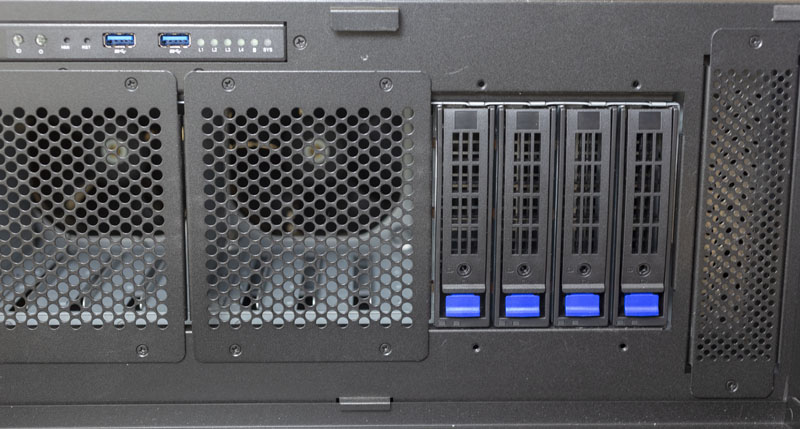
Beneath the hot-swap bays are two massive air inlet conduits that feed the system’s 120mm fans.
Powering the server are two hot-swappable 1.6kW 80Plus Platinum power supplies. We are going to have power consumption figures later in this review, but the system is fully capable of utilizing such large power supplies.
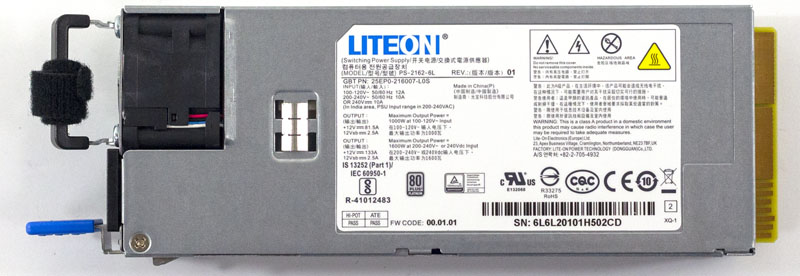
The rear of the chassis is surprisingly spartan. Along with the redundant power supplies, there is a massive 120mm fan along with an array of expansion slots.
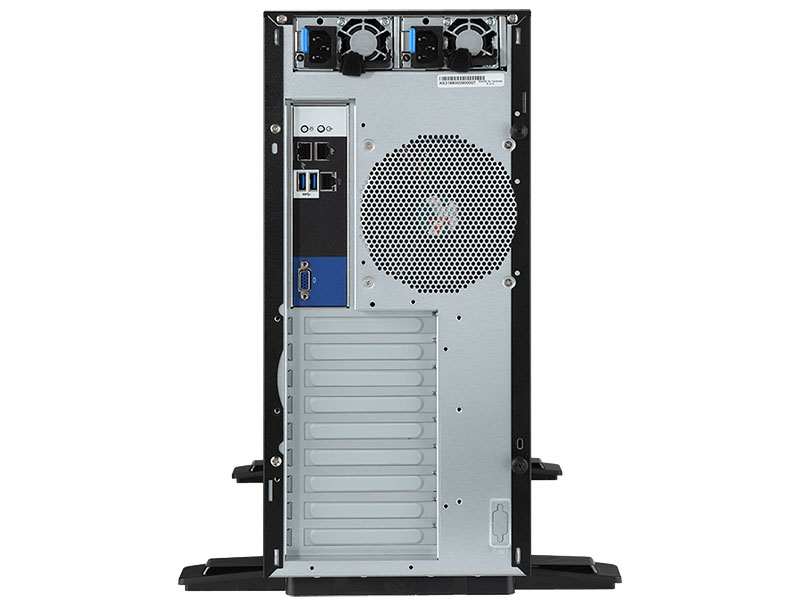
Rear I/O panel is fairly simple at its heart consisting of standard features. These include dual 1GbE networking ports and a management Ethernet port. There are also two USB 3.0 headers as well as a VGA port for local operations teams to use. The two buttons are an ID button alongside a power button. Not all servers have those features.

Opening the chassis is a needlessly complicated affair. Gigabyte uses standard screws to affix the side panel. We would have, at a minimum, like to have seen thumb screws used. Even lower-end tower servers, like the Dell EMC PowerEdge T340 and PowerEdge T140 utilize smooth latching mechanisms. The Gigabyte W291-Z00 is a purpose-built machine and that means one does not get some of the more refined features we see in other servers.
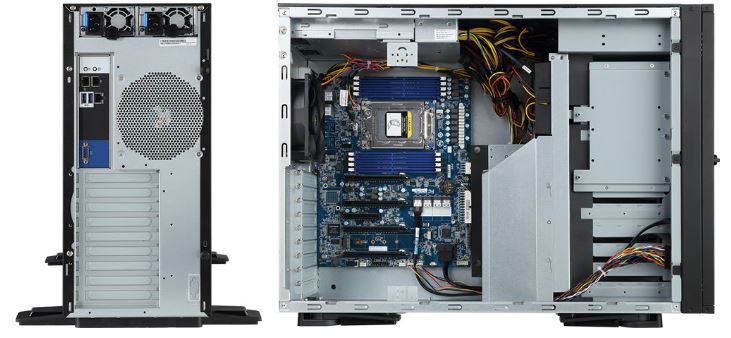
At the heart of the Gigabyte W291-Z00 is the MZ01-CE1 motherboard. You can read our full Gigabyte MZ01-CE1 review. This motherboard provides most of the functionality of the Gigabyte W291-Z00 and shapes how the system can be expanded.
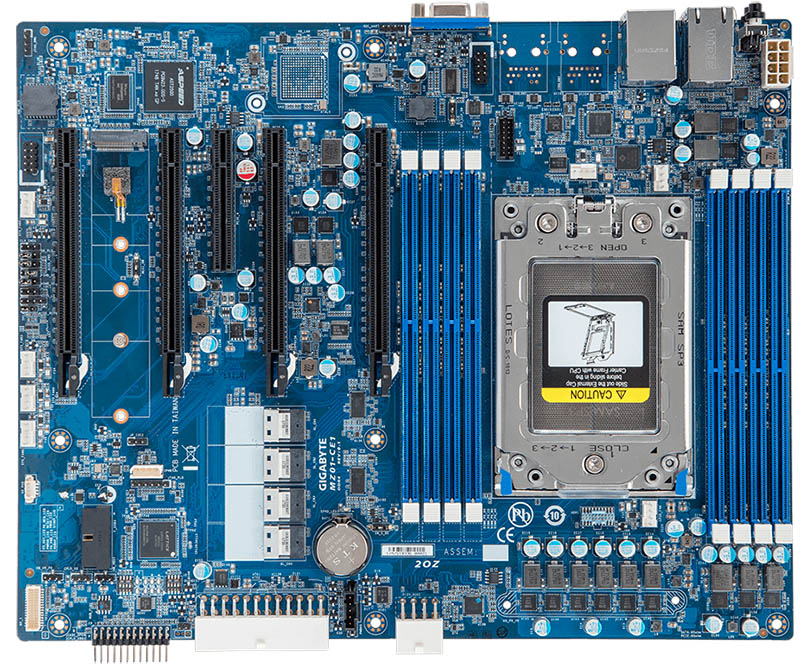
The platform supports a single AMD EPYC 7000 series CPU along with eight DIMMs allowing for full 8-channel memory bandwidth. In the Gigabyte W291-Z00, there is a heatsink cooling solution with copper heat pipes. This solution exhausts air both to the back of the chassis like in a standard server, but also towards the front of the chassis, against the main airflow. Using 180W CPUs, as the system was specified for, we had no cooling issues. Moving to the AMD EPYC 7371 at over 200W TDP, we saw some CPU thermal throttling. Since we tried that which was out of the spec range, we are going to recommend you follow Gigabyte’s configuration guidelines.
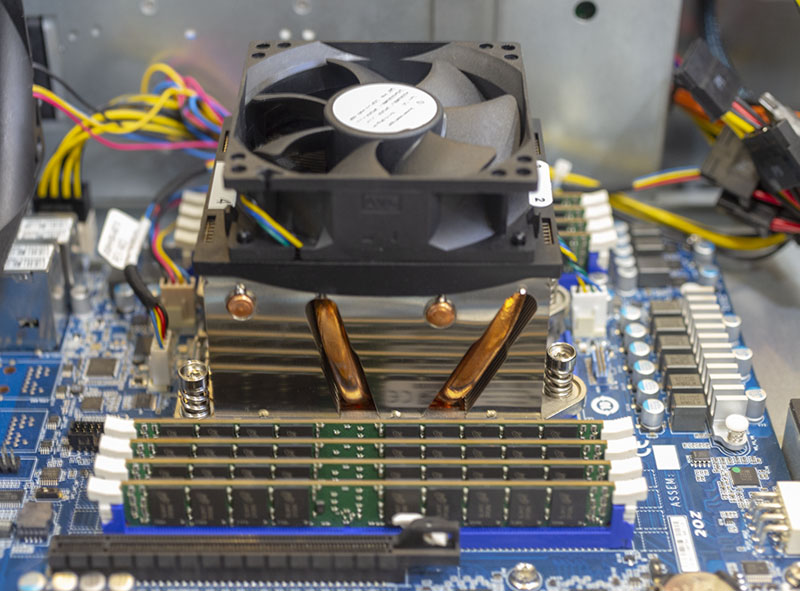
The real standout feature of this motherboard is its PCIe lanes. There are four PCIe x16 slots as well as a PCIe x8 slot.
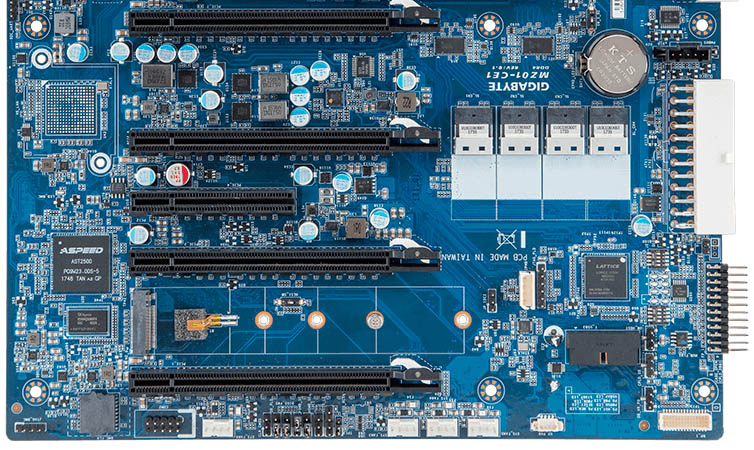
Many of the early AMD EPYC motherboards were designed in ways which blocked using larger PCIe x16 devices, like GPUs, due to placement around the DIMM slots.
One can also find a M.2 slot capable of up to M.2 22110 (110mm) NVMe SSD installation. That larger size accommodates datacenter NVMe SSDs like the Samsung drive below that has PLP. It also allows for devices like the Intel Optane 905P 380GB M.2 NVMe SSD to be used.
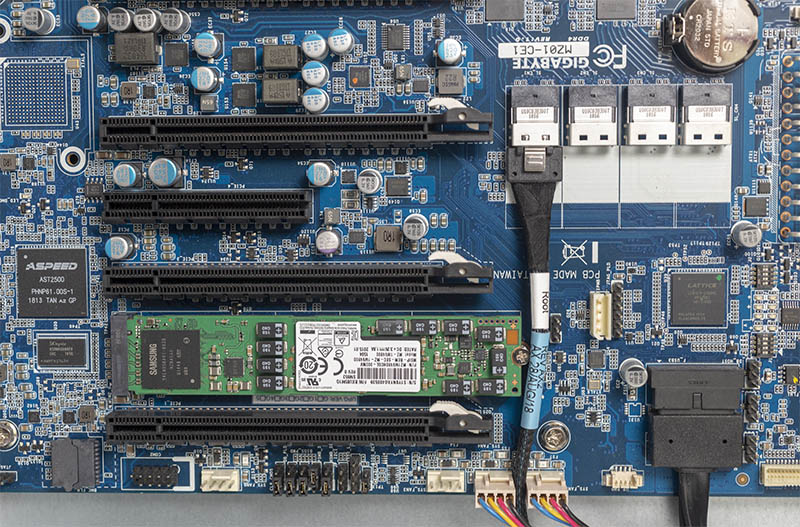
Spacing on the Gigabyte W291-Z00 PCIe slots is set to accommodate double-width GPUs. Here is a glimpse of what that enables, housing four NVIDIA Tesla V100 32GB PCIe cards.
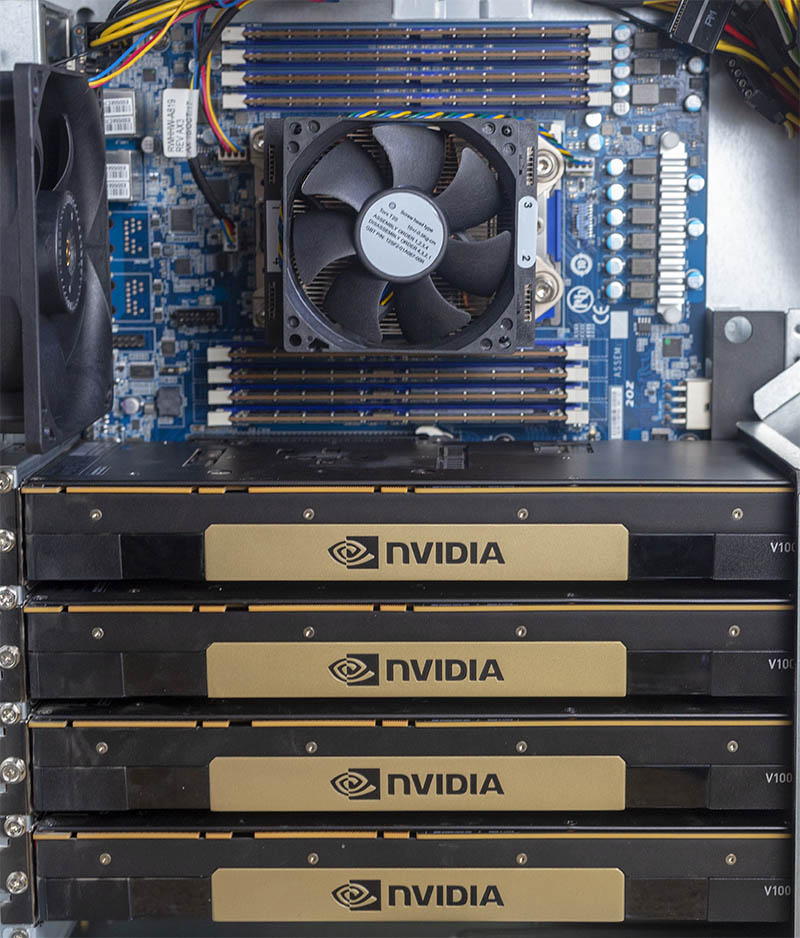
Unlike competitive solutions, the Gigabyte W291-Z00 has the ability to cool these passive GPUs thanks to those large front fans and a custom-crafted air duct.
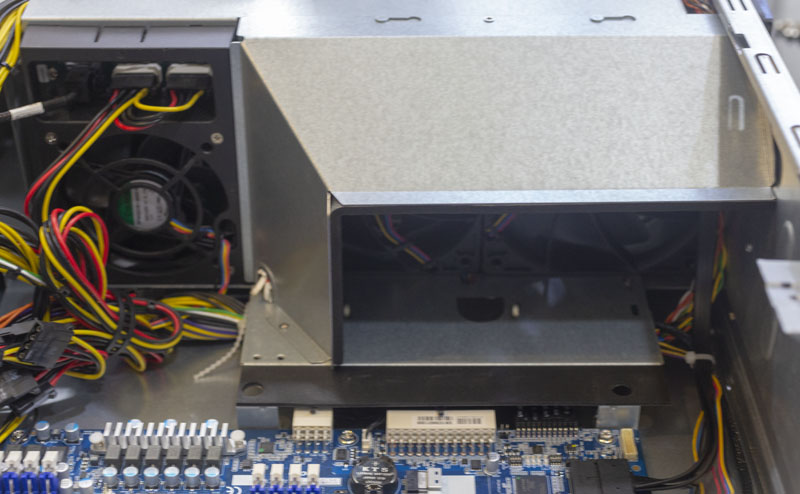
The GPUs are held in place by a chassis retention bar. Four retention brackets keep the GPUs supported during transit and during operation.
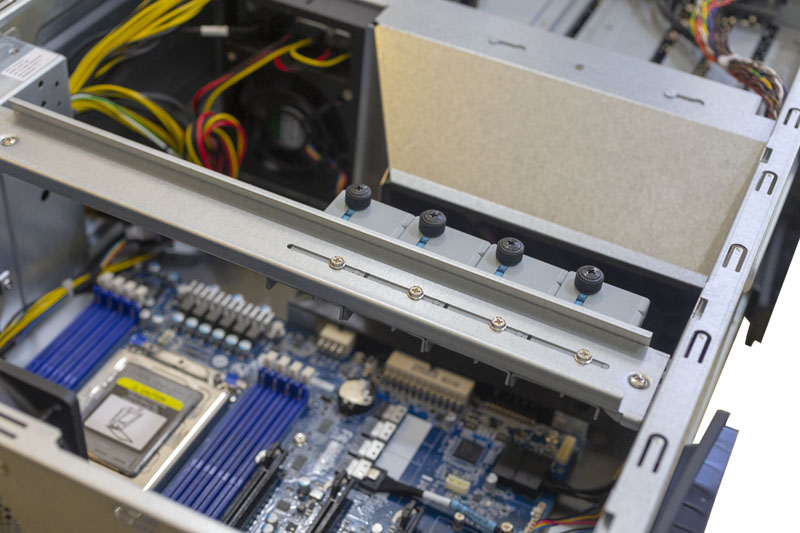
For traditional storage, the Gigabyte W291-Z00 has four SlimSAS ports each providing (despite the SAS name) four SATA III 6.0gbps ports. One can connect sixteen drives without utilizing a HBA which saves significant costs over Intel Lewisburg solutions.
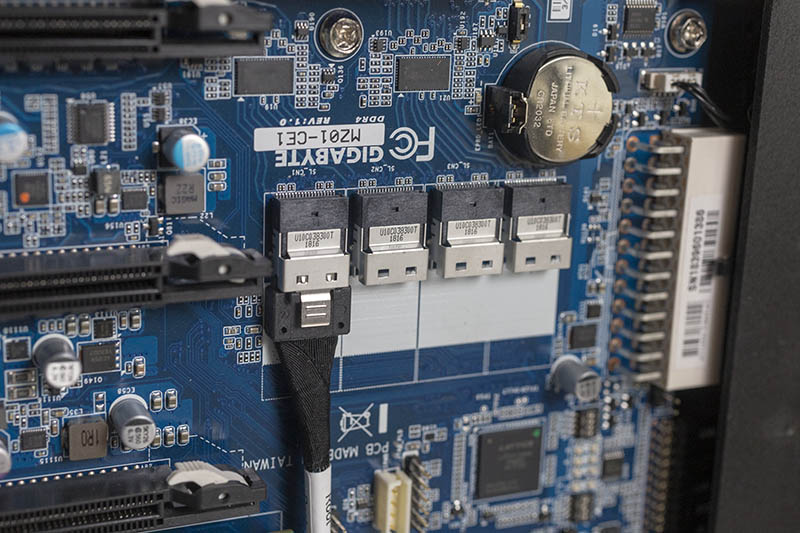
Briefly, we wanted to mention right angle connectors. As you may have seen, the four SlimSAS (SATA) headers, the USB 3.0 front panel header, the front panel switch and LED header, along with the ATX and aux power connectors are all mounted parallel to the motherboard’s surface. This design allows for four large GPUs to be installed and not block the physical connectivity of the connectors. It also means that a trade-off was made
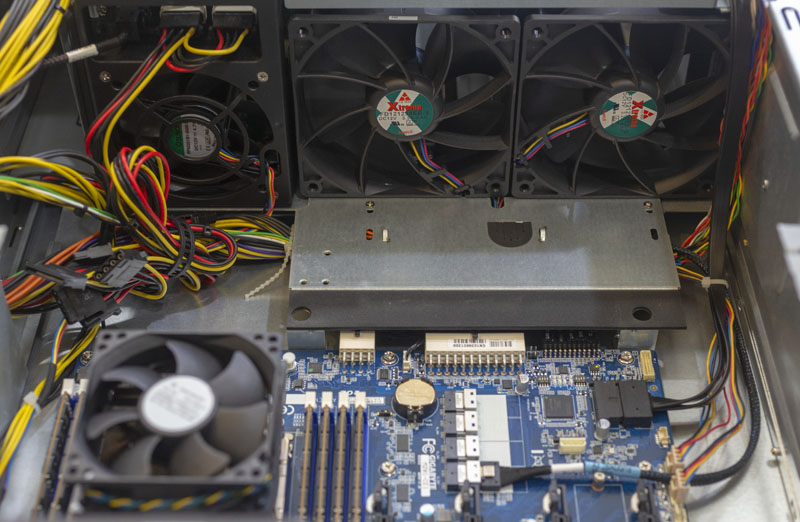
There are a few minor items we wanted to point out in the design. First, the chassis feet swivel out to provide lateral stability to the Gigabyte W291-Z00. Made of hard plastic, we feel that these could have been rubberized potentially cutting down on some of the noise.
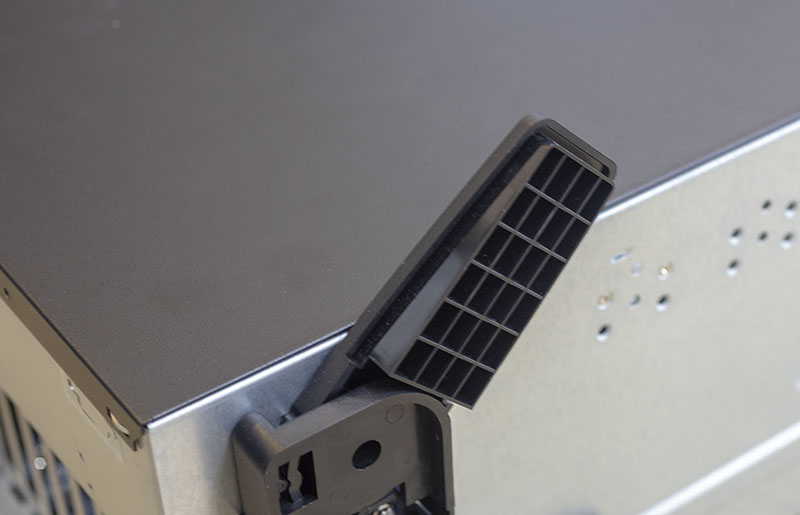
In our test Gigabyte W291-Z00 system, we realized this once we had installed over $40,000 of GPUs. We had configured a $50,000 system that was stuck with 1GbE networking. We would have preferred if Gigabyte found a way to make that PCIe x8 slot usable perhaps with an OCP mezzanine riser or just about anything to improve the networking situation.
Next, we are going to look at the system topology before moving onto the rest of our review. In GPU servers, like the Gigabyte W291-Z00, topology is a major talking point.

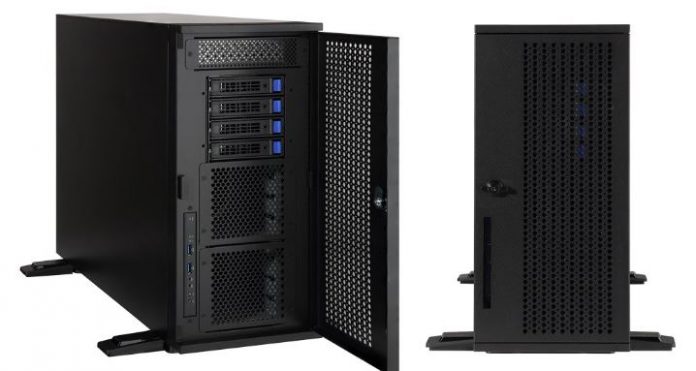



Why not the MZ31? what, slightly larger dimensions?
https://www.gigabyte.com/us/Server-Motherboard/AMD-EPYC-7000
Gigabyte MZ31-AR0, 180w tdp, two SFP+, 16 RDIMM’s, PCIe 3.0 four x16 & three x8
Gigabyte MZ01-CE1, 180w tdp, two 1GbE, 8 RDIMM’s, PCIe 3.0 four x16 & one x8
Excellent and thorough review as usual. Love the tag
“the Gigabyte W291-Z00 … the only option … is the best option.” Lol 8)
Hi ekv – The MZ31-AR0 does not have enough room behind the PCIe slots to fit full-length GPUs. You can read more about it in our Gigabyte MZ31-AR0 Review.
Thanks for this review, Patrick! Great info. I don’t suppose you have four mi60’s kicking about? An all AMD test would be very cool.
Hi hoohoo – unfortunately not. I agree it would be interesting, but it is a bit hard for us to fund that type of project.